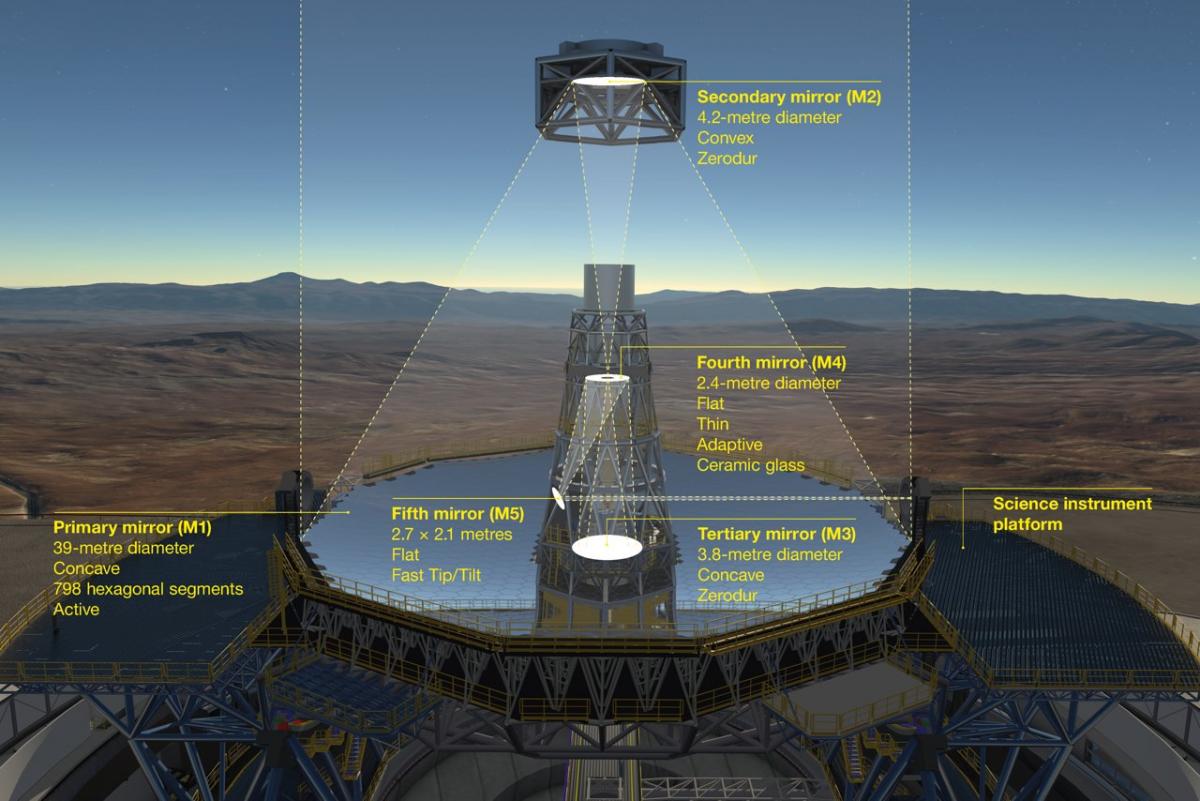The European Southern Observatory has awarded four contracts for the development of major components of the European Extremely Large Telescope (E-ELT), the largest optical/near infrared telescope in the world, which is currently being built on the Chilean mountain Cerro Armazones, and is estimated to cost €1.08 billion.

The optical system of the ELT showing the location of the mirrors. Credit: ESO
The contracts were awarded to two technology groups, Schott and Sener, and also to the Fames consortium (comprised of Fogale Nanotech and Micro-Epsilon) on 18 January at a ceremony at ESO’s headquarters. The three contract recipients are each an industrial partner from ESO member countries.
The 39-metre telescope is based on a five-mirror design featuring a large primary mirror, M1, and four smaller mirrors, M2 to M5. Light is collected initially by M1 and reflects onto M2, suspended above the telescope structure. It then in turn reflects onto M3, located at the centre of M1, and then to a set of adaptive optics (M4) placed above it. The purpose of M5 is to then compensate for any image motion at low frequencies up to a few hertz.
Two of the awarded contracts, awarded to Schott, cover the casting of M2 (4.2 metres, 3.5 tonnes) and M3 (3.8 metres, 3.2 tonnes), the largest single mirrors in the telescope, with M2 to be the largest convex mirror ever produced. Schott has previously produced substrates for M4 using its own glass-ceramic material Zerodur, chosen for its extremely low thermal expansion coefficient. The material will also be used for M2 and M3 which, according to Schott, will be delivered by the end of 2018 and July 2019 respectively.
The third contract was signed by Sener, and covers the development of sophisticated support cells for M2 and M3, in addition to the associated complex active optics systems that guarantee the alignment of the telescope during observation. A hexapod will align the mirrors to a precision within tens of microns, while a wrapping harness will be used to compensate errors in the mirrors’ surface. Sener has previously worked on the E-ELT, developing customised precision mechanisms for M5.
The fourth contract was awarded to the Fames consortium, composed of technology firms Fogale and Micro-Epsilon. The contract covers the fabrication of a total of 4608 edge sensors for the 798 hexagonal segments of ELT's primary mirror. The sensors will be the most accurate ever used in a telescope and will be able to measure the position of the segments relative to their neighbours to within a few nanometres. They form part of a system that will allow the segments to work together to form a perfect imaging system.

